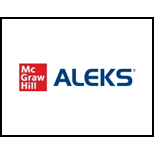
(a)
Interpretation:
The formulas for
Concept introduction:
The general rules for writing the common names of compounds of metals that form more than one ion are:
1) The root name of the metal is followed by the suffix
2)The root name of the metal is followed by the suffix
For writing the systematic name of the compound, a roman numeral within parentheses is written immediately after the name of the metal ion to indicate the charge on it.
(b)
Interpretation:
The formulas for lithium nitride, lithium nitrite, and lithium nitrate are to be determined.
Concept introduction:
The general rules for naming ionic compounds are as follows:
1) In ionic compounds, the cations are named before the anions.
2) In binary ionic compounds, the name of the cation is the same as the name of the metal. The name of the anion includes the root name of the non-metal and a suffix
3) In polyatomic ions in which a non-metal is bonded to one or more oxygen atoms. In two oxoanions in the family, the ion with fewer oxygen atoms has the non-metal root name and a suffix
(c)
Interpretation:
The formulas for strontium hydride and strontium hydroxide are to be determined.
Concept introduction:
The general rules for naming ionic compounds are as follows:
1) In ionic compounds, the cations are named before the anions.
2) In binary ionic compounds, the name of the cation is the same as the name of the metal. The name of the anion includes the root name of the non-metal and a suffix
(d)
Interpretation:
The formulas for magnesium oxide and
Concept introduction:
The general rules for writing the common names of compounds of metals that form more than one ion are:
1) The root name of the metal is followed by the suffix
2)The root name of the metal is followed by the suffix
For writing the systematic name of the compound, a roman numeral within parentheses is written immediately after the name of the metal ion to indicate the charge on it.
Want to see the full answer?
Check out a sample textbook solution
Chapter 2 Solutions
ALEKS 360 for Silberberg Chemistry: The Molecular Nature of Matter and Change
- Synthesize 2-Ethyl-3-methyloxirane from dimethyl(propyl)sulfonium iodide using the necessary organic or inorganic reagents. Draw the structures of the compounds.arrow_forwardSynthesize 2-Hydroxy-2-phenylacetonitrile from phenylmethanol using the necessary organic or inorganic reagents. Draw the structures of the compounds.arrow_forwardSynthesize N-Methylcyclohexylamine from cyclohexanol using the necessary organic or inorganic reagents. Draw the structures of the compounds.arrow_forward
- Synthesize N-Methylcyclohexylamine from cyclohexanol using the necessary organic or inorganic reagents. Draw the structures of the compounds.arrow_forwardIf possible, please provide the formula of the compound 3,3-dimethylbut-2-enal.arrow_forwardSynthesize 1,4-dibromobenzene from acetanilide (N-phenylacetamide) using the necessary organic or inorganic reagents. Draw the structures of the compounds.arrow_forward
- Indicate the products obtained by mixing (3-oxo-3-phenylpropyl)triphenylphosphonium bromide with sodium hydride.arrow_forwardWe mix N-ethyl-2-hexanamine with excess methyl iodide and followed by heating with aqueous Ag2O. Indicate the major products obtained.arrow_forwardIndicate the products obtained by mixing acetophenone with iodine and NaOH.arrow_forward
- Indicate the products obtained by mixing 2-Propanone and ethyllithium and performing a subsequent acid hydrolysis.arrow_forwardIndicate the products obtained if (E)-2-butenal and 3-oxo-butanenitrile are mixed with sodium ethoxide in ethanol.arrow_forwardQuestion 3 (4 points), Draw a full arrow-pushing mechanism for the following reaction Please draw all structures clearly. Note that this intramolecular cyclization is analogous to the mechanism for halohydrin formation. COH Br + HBr Brarrow_forward
 ChemistryChemistryISBN:9781305957404Author:Steven S. Zumdahl, Susan A. Zumdahl, Donald J. DeCostePublisher:Cengage Learning
ChemistryChemistryISBN:9781305957404Author:Steven S. Zumdahl, Susan A. Zumdahl, Donald J. DeCostePublisher:Cengage Learning ChemistryChemistryISBN:9781259911156Author:Raymond Chang Dr., Jason Overby ProfessorPublisher:McGraw-Hill Education
ChemistryChemistryISBN:9781259911156Author:Raymond Chang Dr., Jason Overby ProfessorPublisher:McGraw-Hill Education Principles of Instrumental AnalysisChemistryISBN:9781305577213Author:Douglas A. Skoog, F. James Holler, Stanley R. CrouchPublisher:Cengage Learning
Principles of Instrumental AnalysisChemistryISBN:9781305577213Author:Douglas A. Skoog, F. James Holler, Stanley R. CrouchPublisher:Cengage Learning Organic ChemistryChemistryISBN:9780078021558Author:Janice Gorzynski Smith Dr.Publisher:McGraw-Hill Education
Organic ChemistryChemistryISBN:9780078021558Author:Janice Gorzynski Smith Dr.Publisher:McGraw-Hill Education Chemistry: Principles and ReactionsChemistryISBN:9781305079373Author:William L. Masterton, Cecile N. HurleyPublisher:Cengage Learning
Chemistry: Principles and ReactionsChemistryISBN:9781305079373Author:William L. Masterton, Cecile N. HurleyPublisher:Cengage Learning Elementary Principles of Chemical Processes, Bind...ChemistryISBN:9781118431221Author:Richard M. Felder, Ronald W. Rousseau, Lisa G. BullardPublisher:WILEY
Elementary Principles of Chemical Processes, Bind...ChemistryISBN:9781118431221Author:Richard M. Felder, Ronald W. Rousseau, Lisa G. BullardPublisher:WILEY





